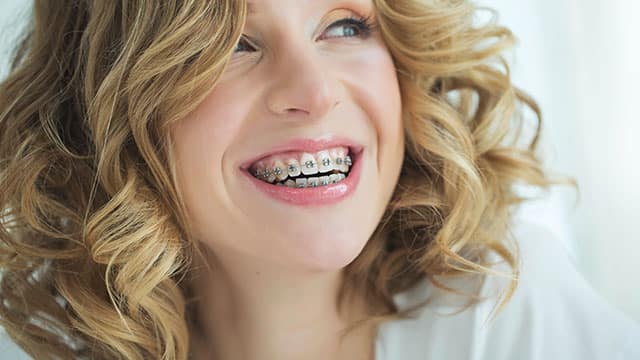The Health Benefits of Straight Teeth
When your teeth are aligned, you can actually experience better oral health because:
- Your teeth will be easier for you to clean.
- Your gums may support your teeth better when they aren't overlapping.
- You may have a decreased risk of chipping, breaking, or wearing away your teeth when they fit together correctly.
- You could even relieve abnormal stress put on your jaw from misaligned teeth.
When Braces Aren't Ideal
There are several reasons why braces might not be right for you. These include:
- You don't like the way they look
- You're only experiencing minimal spacing or crowding issues
- You have minimal bite alignment problems
- Braces may be too cost-prohibitive
So, what are the alternatives to traditional wire-and-bracket orthodontic hardware, and how do they all work?
Clear Aligners
Clear aligners are discreet, removable alternatives to traditional metal braces. When you get these custom-made, clear plastic aligners, you'll receive several months' worth in advance, and you'll change them out at regular intervals (usually about every two weeks) to help shift your teeth into proper position. The entire series of aligners could take up to nine months or longer, depending on the amount of alignment needed.
It is important to note that the American Dental Association discourages getting clear aligners directly from manufacturers in what's being called Do-It-Yourself (DIY) Orthodontics. Moving teeth is a medical procedure that should be done with the supervision of a licensed professional.
Learn more about the differences between clear aligners and braces.
Retainers
If your teeth are only slightly crooked due to minor overcrowding, you may be able to get your teeth aligned using a retainer. Retainers are usually used to maintain the alignment of teeth after you wear braces, but for small adjustments, a retainer may be able to do the trick.
Headgear
If you have a misaligned bite, your dental professional may recommend headgear to adjust your jaw's position. This appliance's main disadvantage is that it's not very discrete and can take time for sufficient results. Headgear utilizes a strap that wraps around the back of the head or neck with wires that go around the side of the face to the mouth. The headgear applies delicate pressure to the teeth and jaw. This device is typically worn for several hours a day until the jaw is sufficiently aligned.
Veneers
If you have gaps between your teeth, they're chipped or fractured, they are worn or misshapen, or if they are stained and bleaching treatments have proven ineffective, veneers may be the corrective option you're looking for. Veneers are thin covers (or "caps") that look like natural teeth. If you choose to get veneers, your dental professional will remove a thin layer of tooth enamel, which is irreversible, then fix the veneers to your teeth using a light-sensitive resin. Another option available to you is no-prep veneers, which the American Academy of Cosmetic Dentistry explains are attached without removing as much of your tooth enamel.
Your orthodontist is best positioned to make recommendations to straighten your teeth tailored to your specific needs. Hopefully, now that you have a solid foundation of information regarding your options, you and your dental professional will be able to align on a choice to straighten your teeth that will make you smile.
This article is intended to promote understanding of and knowledge about general oral health topics. It is not intended to be a substitute for professional advice, diagnosis or treatment. Always seek the advice of your dentist or other qualified healthcare provider with any questions you may have regarding a medical condition or treatment.
ORAL HEALTH QUIZ
What's behind your smile?
Take our Oral Health assessment to get the most from your oral care routine
ORAL HEALTH QUIZ
What's behind your smile?
Take our Oral Health assessment to get the most from your oral care routine














